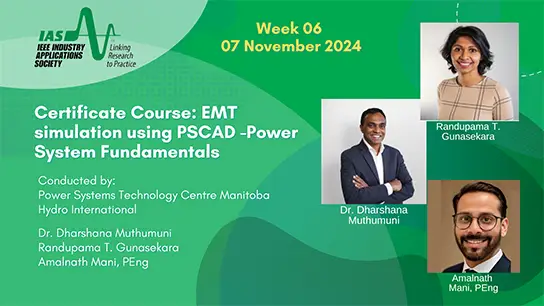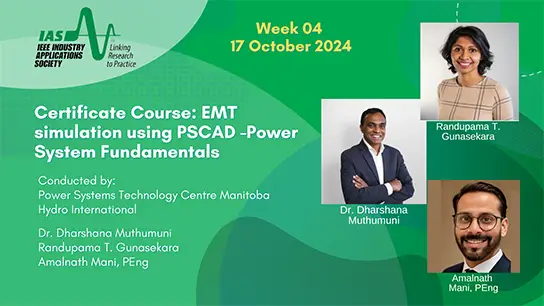New Technologies and Global Energy Efficiency Regulation Developments for Electric Motors and Drives
Anibal T. de Almeida
-
Members: FreeIAS
IEEE Members: $11.00
Non-members: $15.00Length: 01:05:16
15 Jan 2020
Abstract: Energy efficient motor systems have a huge electricity savings potential, presenting a cost-effective option for reducing GHG emissions. The electric motor market has witnessed a major change in the last decade in several aspects: in technology leading to the availability higher efficiency models, in content with energy-efficiency policies, the need for more sustainable industrial production and in its economy due to increasing electricity prices, all aspects contributing to push the market towards more energy-efficient electric motors.
Additionally, the growing market penetration of Variable Speed Drives (VSD), introducing large energy savings in systems with variable loads, was accompanied by a growing concern over their operating efficiency in full and especially in part-load, as well as in stand-by mode.
In Europe, recent developments in motors and drives efficiency regulation under the umbrella of the Ecodesign Directive have highlighted the significant savings that can still be achieved in the field by raising the minimum efficiency performance standards (MEPS) for motors and introducing new standards for Variable Speed Drives (VSDs).
This webinar presents an overview of minimum efficiency standards around the World, analyses the relationship between the introduction of new regulations and the development of new technologies, as well as the potential impact in terms of electricity savings and corresponding reduction in GHG emissions.
The increasing number of countries implementing MEPS for motors, together with the growing awareness within governments and industry towards the importance of energy-efficiency and its multiple benefits, has led to the market introduction of new technologies with great improvements in the energy efficiency of motors, which now reach levels well above the IE3 level, known as Super- and Ultra-Premium Efficiency Motors (IE4 and IE5, respectively), and of high efficiency VSDs
Additionally, the growing market penetration of Variable Speed Drives (VSD), introducing large energy savings in systems with variable loads, was accompanied by a growing concern over their operating efficiency in full and especially in part-load, as well as in stand-by mode.
In Europe, recent developments in motors and drives efficiency regulation under the umbrella of the Ecodesign Directive have highlighted the significant savings that can still be achieved in the field by raising the minimum efficiency performance standards (MEPS) for motors and introducing new standards for Variable Speed Drives (VSDs).
This webinar presents an overview of minimum efficiency standards around the World, analyses the relationship between the introduction of new regulations and the development of new technologies, as well as the potential impact in terms of electricity savings and corresponding reduction in GHG emissions.
The increasing number of countries implementing MEPS for motors, together with the growing awareness within governments and industry towards the importance of energy-efficiency and its multiple benefits, has led to the market introduction of new technologies with great improvements in the energy efficiency of motors, which now reach levels well above the IE3 level, known as Super- and Ultra-Premium Efficiency Motors (IE4 and IE5, respectively), and of high efficiency VSDs


